Post by jbwelda on Jun 20, 2019 23:57:01 GMT -5
Back a decade or so ago I went in with my friend Rick and bought a bunch of Scalextric slot car track, and a big table to set it up on, while Rick donated his semi-heated spare garage to set it up in. He also liked building models, from the time he was a kid just like me, and so we both got into building some interesting slot cars over the next few years. We both liked to take cars from our youth and upgrade them, dabbling in magnets for traction but ultimately preferring non-magnet cars that cornered so much more like real life and required actual driving skill rather than just brute force magnet traction. We really improved the track, I rigged up a photocell lap counter and timer, and we had a blast.
After that folded I pretty much packed away my slots I built or at least put them into a display case and more or less forgot about them. But the other day I was cleaning up around them and decided to bring them out to photograph some of them. So I might as well show them here!
Like I said, I kind of enjoy working with what was available back in the mid sixties basically, but I wasn't above putting an old body onto a modern chassis, especially during our magnet era. But many of the cars I will show incorporate old school chassis, wheels, bodies, motors and pretty much everything else. At some point I realized the British were as hot on slots as we Americans were, and I started getting into some of their brands, Scalextric primarily, and the very unique models they put out...models of cars that were right up my alley!
So here are some photos, with some narrative trying to be helpful in understanding what I am showing.
Here is the group of cars I will feature in this post: a Lotus 19, Monte Carlo Mini Cooper, Volkswagen "Sprit Window" Bug, Nissan Skyline and D-Type Jaguar.
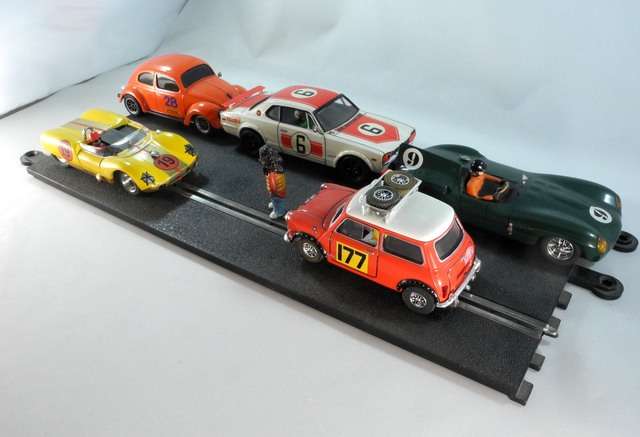
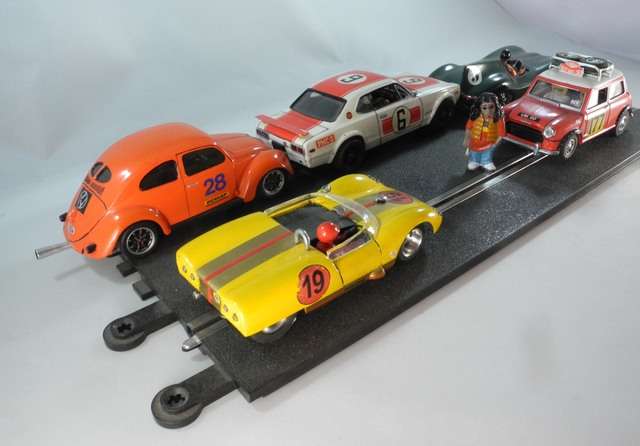
Lets look at the Lotus 19 first. This is an old (late 50s - early 60s) Strombecker body that came with sets they sold at the time. Out of the box, it stood hopelessly high, and the plastic chassis with no axle bearings left a lot to be desired, performance wise. So, as typical when approaching these vintage cars, the watchwords are: lighten and lower. Lower down on the ground if possible. So it is. The motor remains stock and I am still using the plastic chassis, but I have epoxied axle bearing surfaces into it, strengthened it, added brass weights to the underside to lower center of gravity, souped up the wheels and tires and done a number of other judicious adjustments and replacements. This thing now SCREAMS, and I used it quite a bit, so the paint job has a few scrapes and nicks.
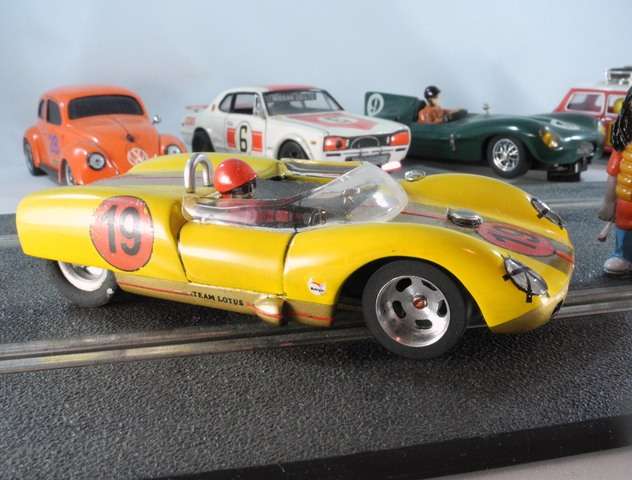
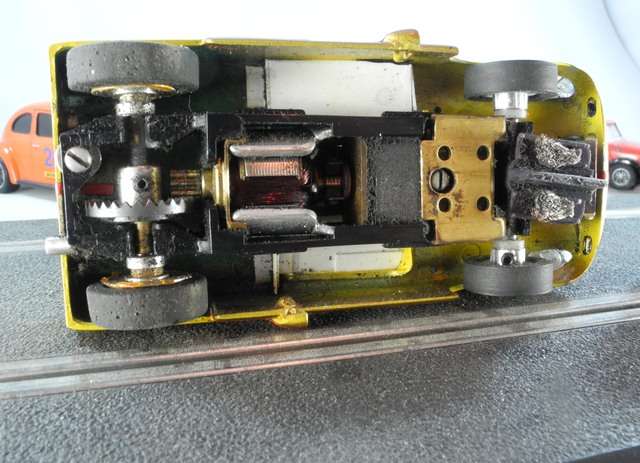
Monte Carlo Mini Cooper: this one is not finished and is pretty much out of the box except I modified the interior so the body would sit down properly on the tires, which I replaced with some more appropriate than what came on the car and made some other modifications. This is a modern car by the way, Chinese made with a miniature Mabuchi can motor. Screams though, especially once I replaced the tires so it could get some traction.
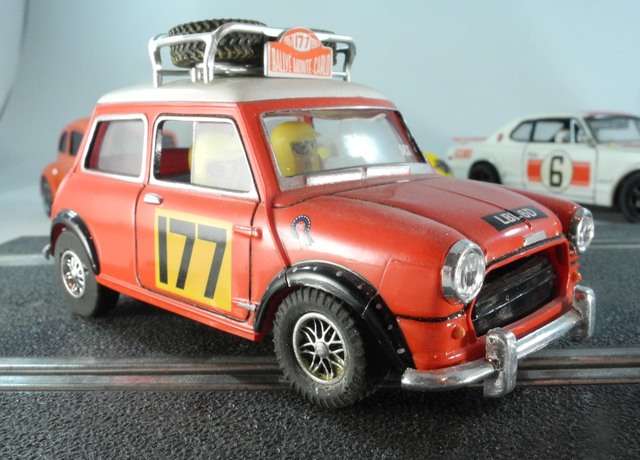
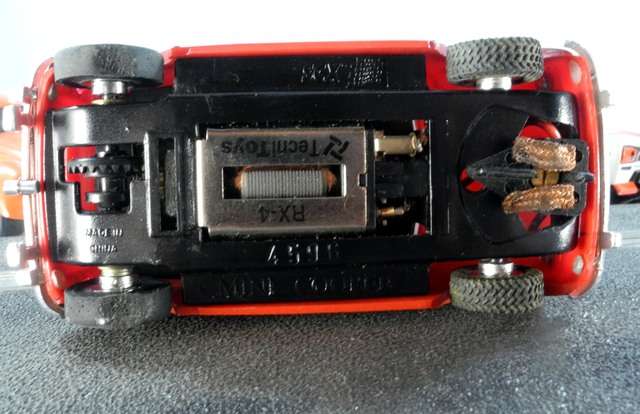
Here is a Volkswagen "Sprit Window" (I swear that's what it said on the box!) Bug. Body was sourced from the Japanese company LS, and adapted to a modern plastic chassis (forgot to get a shot of it). This is a really nice kit and it was pretty easy to adapt to the chassis and get on the track. I used some wheels from a Lotus Seven slot car from Scalextric I think, in fact the whole chassis and motor is from the Lotus 7, though it is trimmed down considerably. Also note use of a horseshoe magnet to really get it to stick to the track! This one turned out so nice though I never really had the heart to actually race it...if I had I would remove the big magnet to make it more fun (but slow it down considerably).
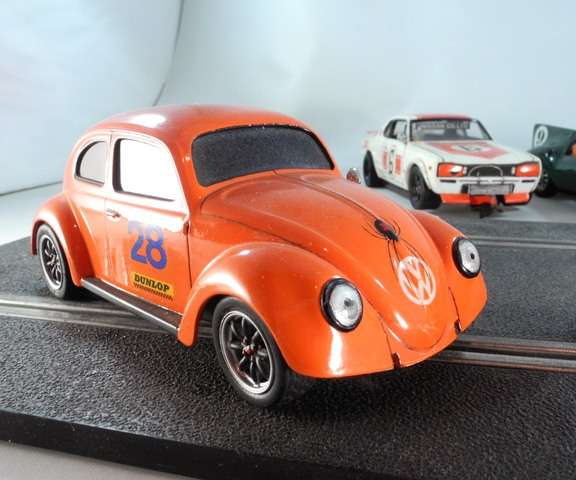
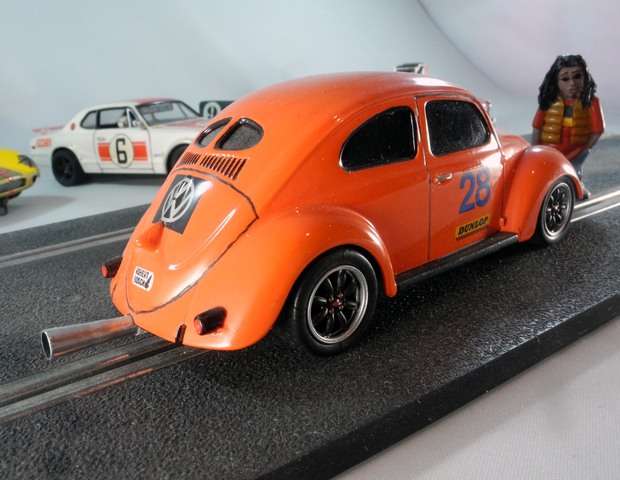
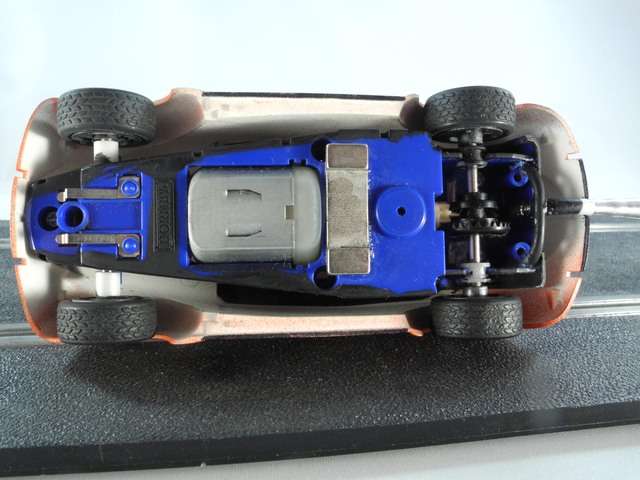
Here is one of my favorites, again a modern 1/32 body (from Arii I believe) Nissan Skyline, adapted to a modern slot car chassis (lifted from a Scalextric Toyota Corolla rally car). I did run this one, enough times to break off the spoiler, but it remains pretty clean and nice. Ran great when I was running it too. If you look at the chassis shot you will notice some "performance enhancements": the "horseshoe" style magnet mounted just in front of the rear wheels...this is shaped like this in profile XxxxxX with the capital Xs representing its "horseshoe", which places them down closer to the track and hence the center strip of the track, than the center of the magnet. What that does is release the magnetic pull somewhat when you are going straight, but as your car edges into a turn, the horseshoe part of the magnet gets closer to the center strip (which it is attracted to) and provides dynamic traction control in turns. Works way better in theory than I fact though. Also visible is some blue masking tape. That is actually a vital component of the chassis design: it serves a quick and easy way of stabilizing the motor and the chassis and integrating it more into one unit, and dramatically improves the smoothness of the car, as well as the quietness. So its not just messy...its there for a purpose!
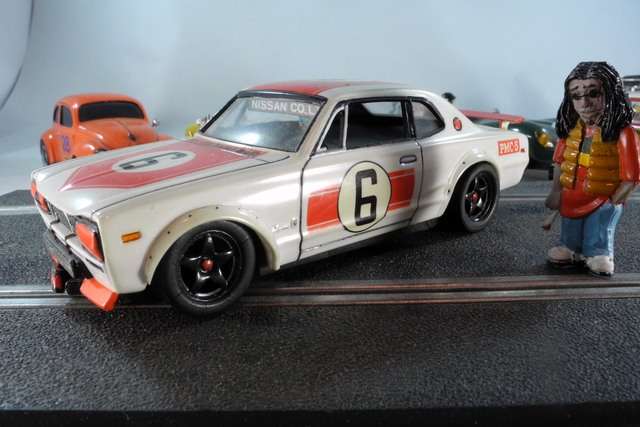
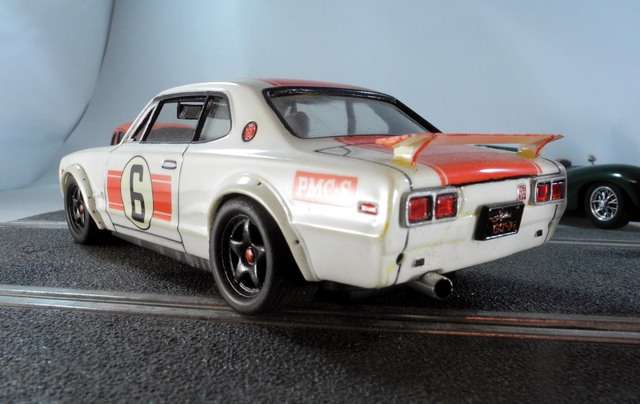
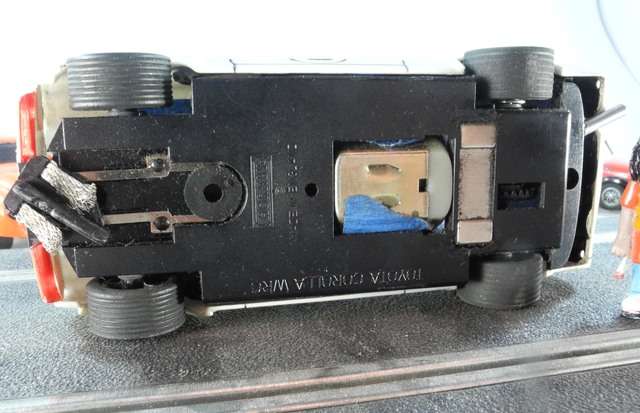
Finally for this group, here is a Strombecker (could be an Eldon?) D type Jaguar, adapted to a modern slot car chassis. You may remember these cars, they came in the typical beginners home race set of the early 60s and as usual for the time and place sat way too high and in general looked like they had been hit by grannys dork-stick (God bless granny, don't get me wrong, she generally financed my wild ideas back then). So here I did an extreme lowering, did some detailing like building the side exhaust pipe, added some white metal mirrors and a decent pilot figure. I forget where I got the wire wheels but they are an extreme improvement over the original. I cannot really read the chassis writing, but you can see I narrowed it pretty extremely. Also note the motor position, these cars (the car the chassis came under I mean) ran a driveshaft back to the rear wheels which was kind of odd (and near impossible to take apart and put back together I will tell you!)
This is another of my favorite conversions and even though I never seriously raced it, it did go crazy fast, which was helped no small amount by the monster magnet hidden up under the chassis.
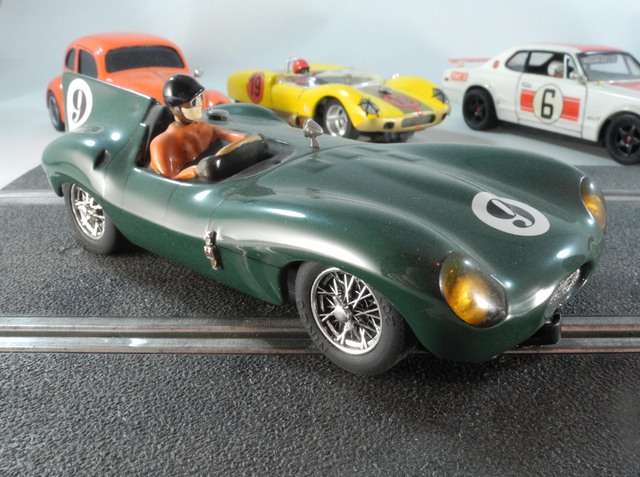
Don't mind Smokey, he is our security guy around the track. He's cool.
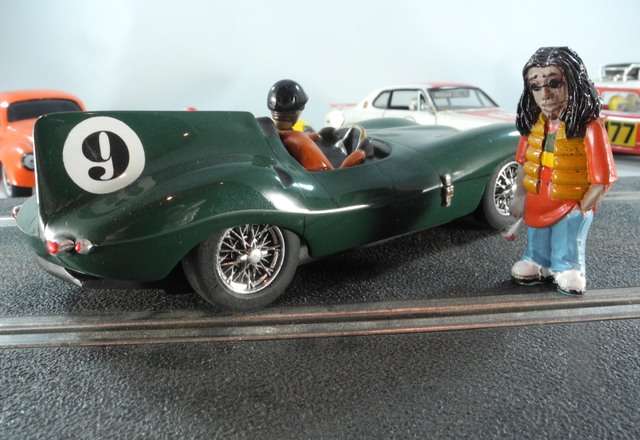
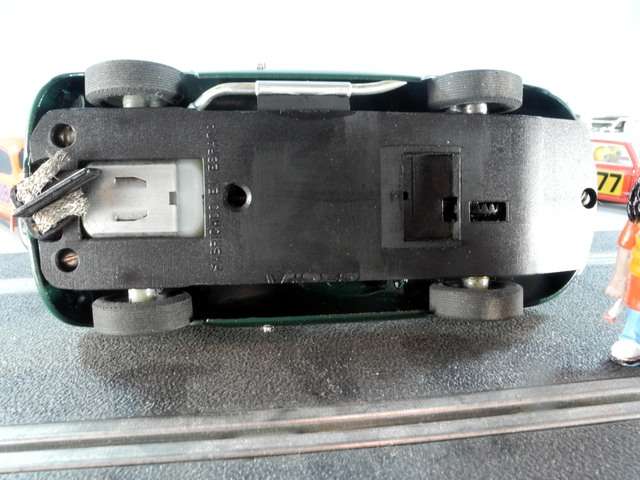
I will make another installment soon, meanwhile comments are appreciated and if you got slots, show em!
jb
After that folded I pretty much packed away my slots I built or at least put them into a display case and more or less forgot about them. But the other day I was cleaning up around them and decided to bring them out to photograph some of them. So I might as well show them here!
Like I said, I kind of enjoy working with what was available back in the mid sixties basically, but I wasn't above putting an old body onto a modern chassis, especially during our magnet era. But many of the cars I will show incorporate old school chassis, wheels, bodies, motors and pretty much everything else. At some point I realized the British were as hot on slots as we Americans were, and I started getting into some of their brands, Scalextric primarily, and the very unique models they put out...models of cars that were right up my alley!
So here are some photos, with some narrative trying to be helpful in understanding what I am showing.
Here is the group of cars I will feature in this post: a Lotus 19, Monte Carlo Mini Cooper, Volkswagen "Sprit Window" Bug, Nissan Skyline and D-Type Jaguar.


Lets look at the Lotus 19 first. This is an old (late 50s - early 60s) Strombecker body that came with sets they sold at the time. Out of the box, it stood hopelessly high, and the plastic chassis with no axle bearings left a lot to be desired, performance wise. So, as typical when approaching these vintage cars, the watchwords are: lighten and lower. Lower down on the ground if possible. So it is. The motor remains stock and I am still using the plastic chassis, but I have epoxied axle bearing surfaces into it, strengthened it, added brass weights to the underside to lower center of gravity, souped up the wheels and tires and done a number of other judicious adjustments and replacements. This thing now SCREAMS, and I used it quite a bit, so the paint job has a few scrapes and nicks.


Monte Carlo Mini Cooper: this one is not finished and is pretty much out of the box except I modified the interior so the body would sit down properly on the tires, which I replaced with some more appropriate than what came on the car and made some other modifications. This is a modern car by the way, Chinese made with a miniature Mabuchi can motor. Screams though, especially once I replaced the tires so it could get some traction.


Here is a Volkswagen "Sprit Window" (I swear that's what it said on the box!) Bug. Body was sourced from the Japanese company LS, and adapted to a modern plastic chassis (forgot to get a shot of it). This is a really nice kit and it was pretty easy to adapt to the chassis and get on the track. I used some wheels from a Lotus Seven slot car from Scalextric I think, in fact the whole chassis and motor is from the Lotus 7, though it is trimmed down considerably. Also note use of a horseshoe magnet to really get it to stick to the track! This one turned out so nice though I never really had the heart to actually race it...if I had I would remove the big magnet to make it more fun (but slow it down considerably).



Here is one of my favorites, again a modern 1/32 body (from Arii I believe) Nissan Skyline, adapted to a modern slot car chassis (lifted from a Scalextric Toyota Corolla rally car). I did run this one, enough times to break off the spoiler, but it remains pretty clean and nice. Ran great when I was running it too. If you look at the chassis shot you will notice some "performance enhancements": the "horseshoe" style magnet mounted just in front of the rear wheels...this is shaped like this in profile XxxxxX with the capital Xs representing its "horseshoe", which places them down closer to the track and hence the center strip of the track, than the center of the magnet. What that does is release the magnetic pull somewhat when you are going straight, but as your car edges into a turn, the horseshoe part of the magnet gets closer to the center strip (which it is attracted to) and provides dynamic traction control in turns. Works way better in theory than I fact though. Also visible is some blue masking tape. That is actually a vital component of the chassis design: it serves a quick and easy way of stabilizing the motor and the chassis and integrating it more into one unit, and dramatically improves the smoothness of the car, as well as the quietness. So its not just messy...its there for a purpose!



Finally for this group, here is a Strombecker (could be an Eldon?) D type Jaguar, adapted to a modern slot car chassis. You may remember these cars, they came in the typical beginners home race set of the early 60s and as usual for the time and place sat way too high and in general looked like they had been hit by grannys dork-stick (God bless granny, don't get me wrong, she generally financed my wild ideas back then). So here I did an extreme lowering, did some detailing like building the side exhaust pipe, added some white metal mirrors and a decent pilot figure. I forget where I got the wire wheels but they are an extreme improvement over the original. I cannot really read the chassis writing, but you can see I narrowed it pretty extremely. Also note the motor position, these cars (the car the chassis came under I mean) ran a driveshaft back to the rear wheels which was kind of odd (and near impossible to take apart and put back together I will tell you!)
This is another of my favorite conversions and even though I never seriously raced it, it did go crazy fast, which was helped no small amount by the monster magnet hidden up under the chassis.

Don't mind Smokey, he is our security guy around the track. He's cool.


I will make another installment soon, meanwhile comments are appreciated and if you got slots, show em!
jb
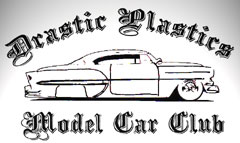

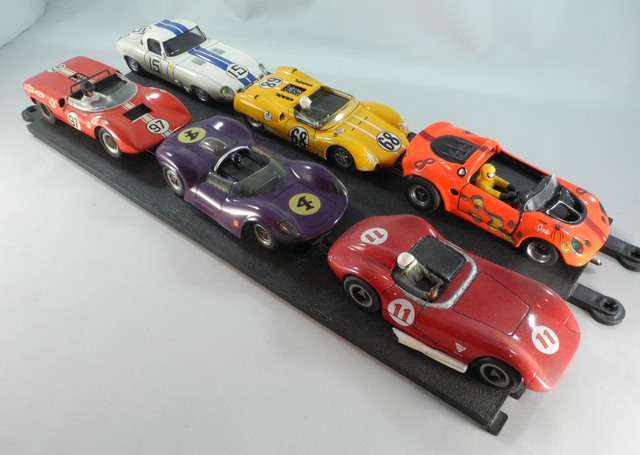
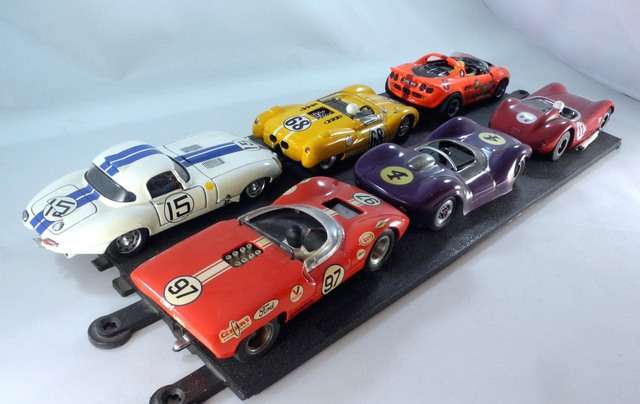

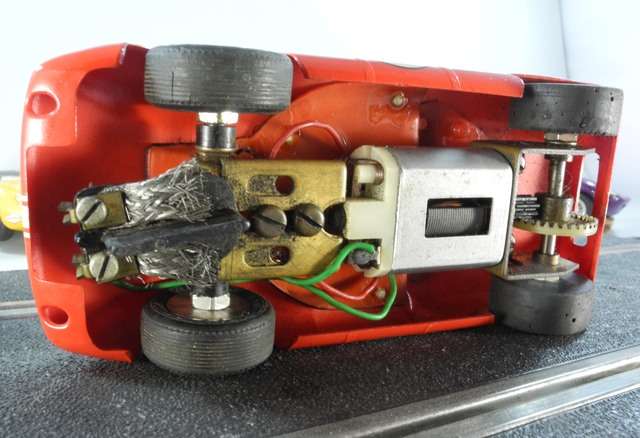
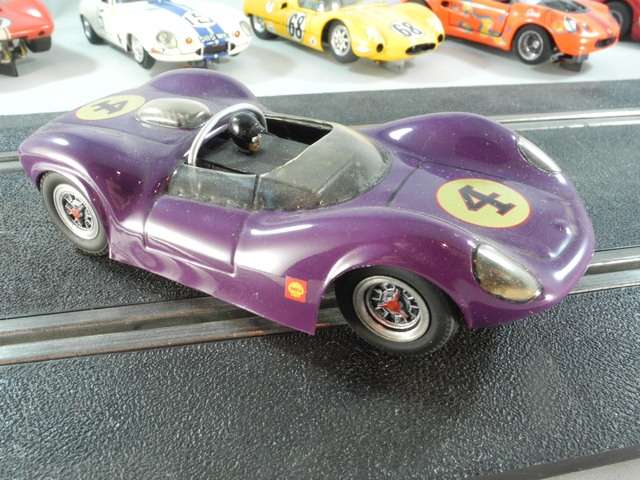
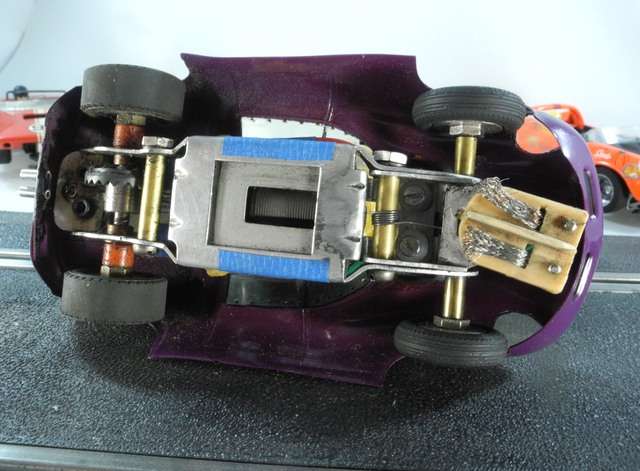
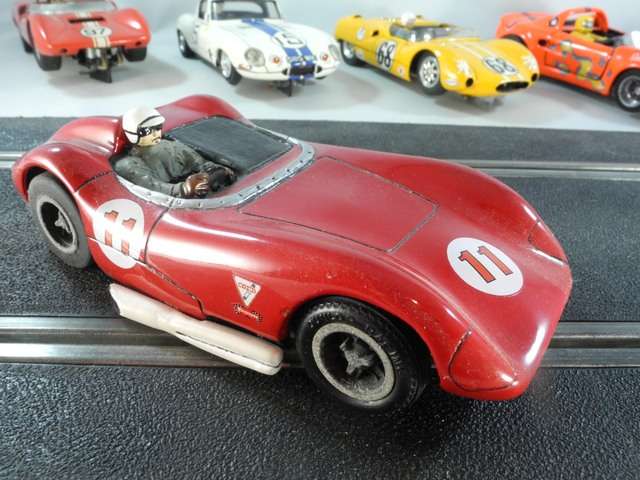
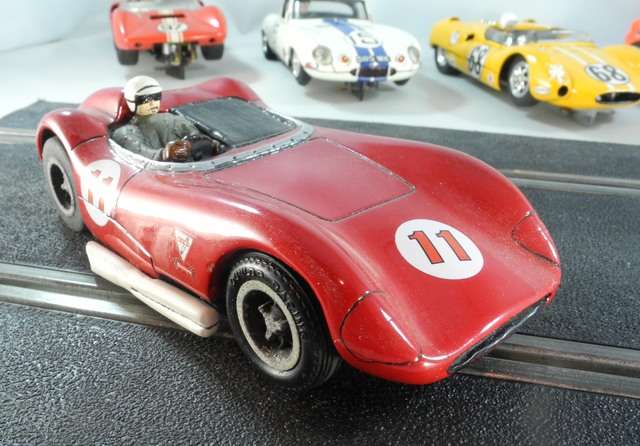
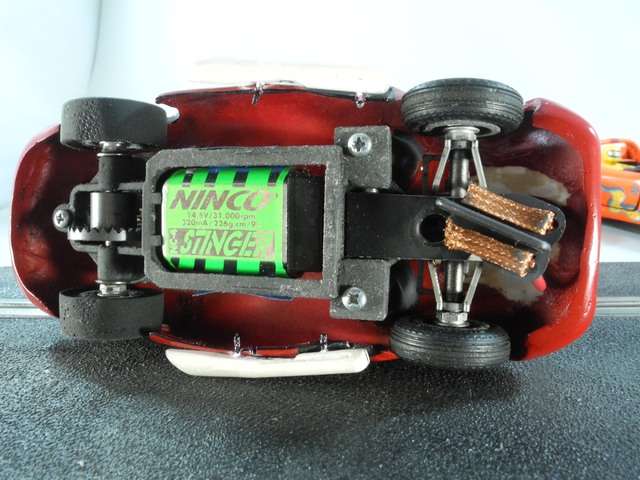
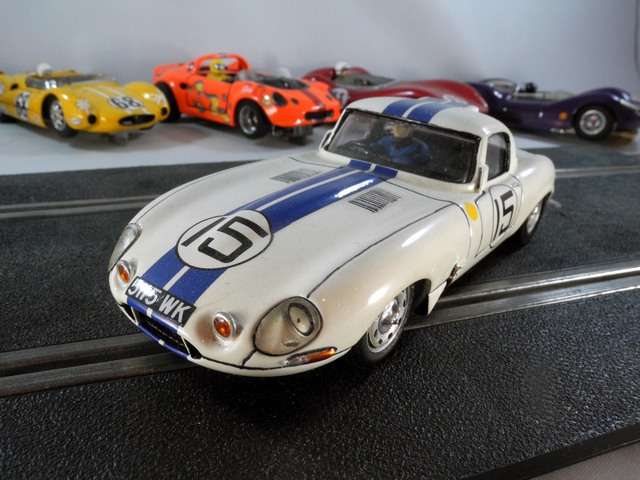
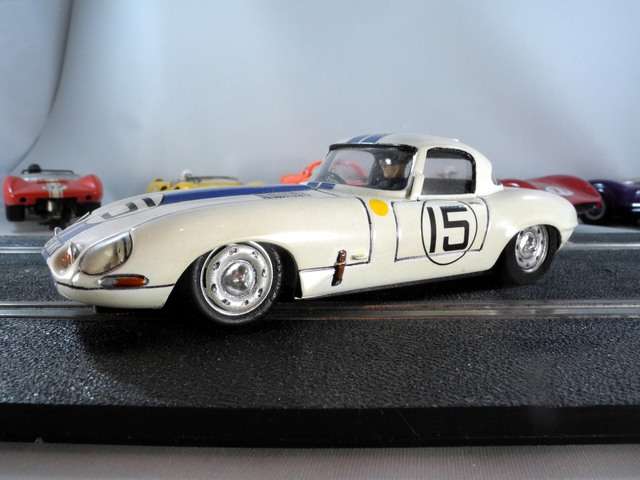

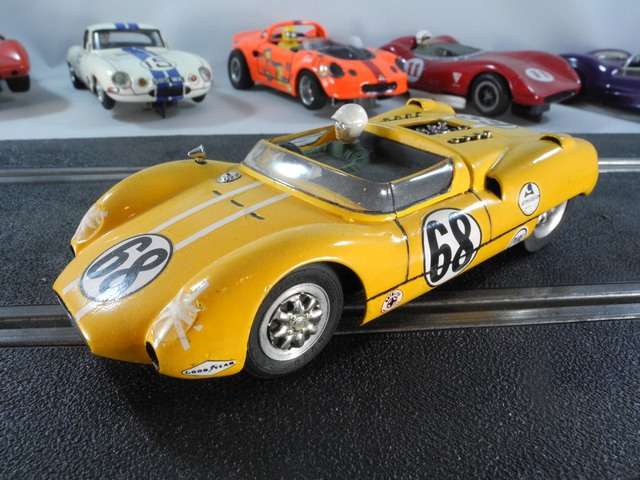
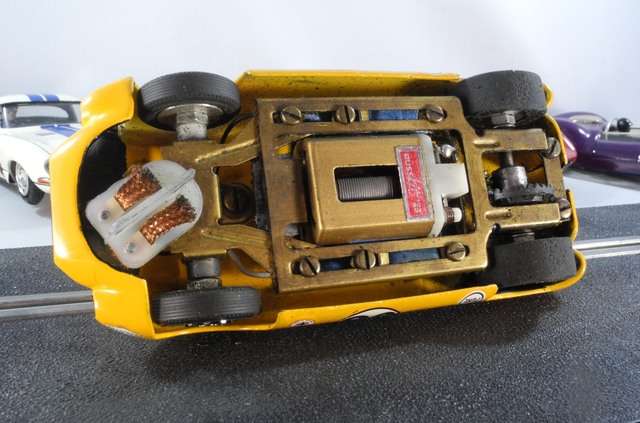
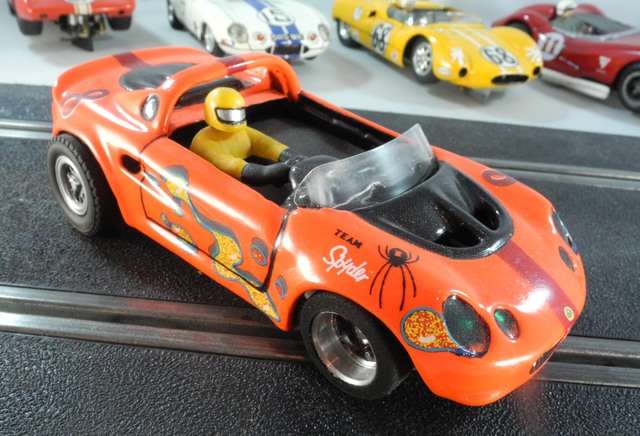
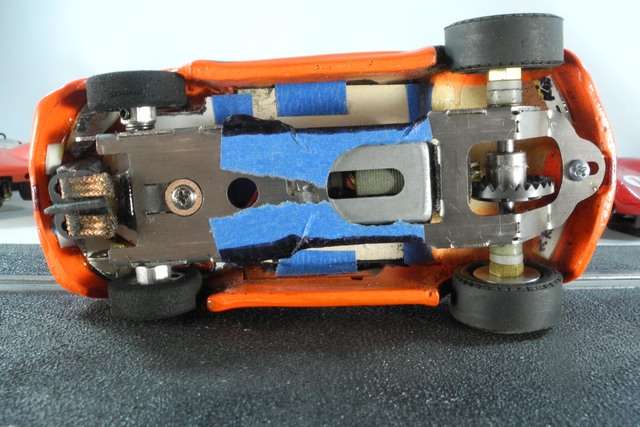

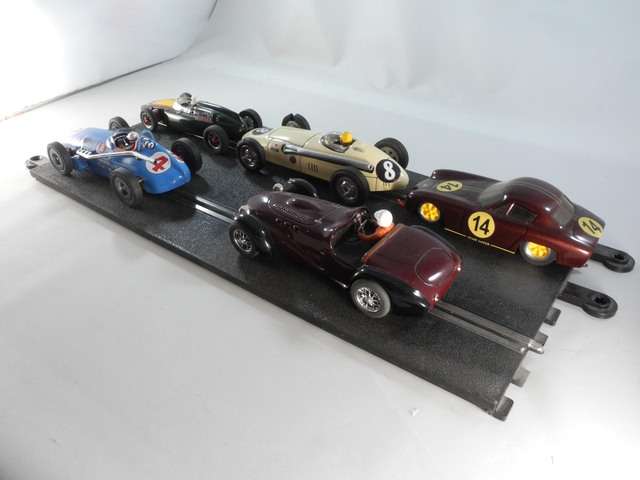
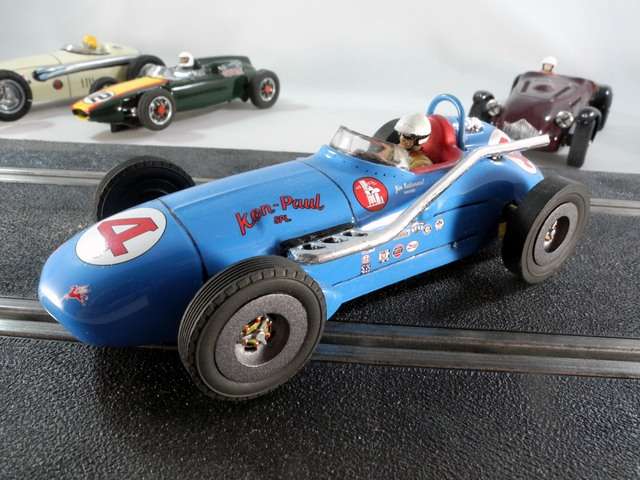

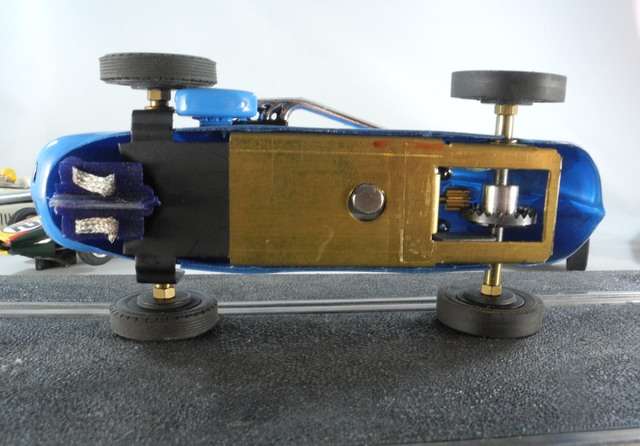
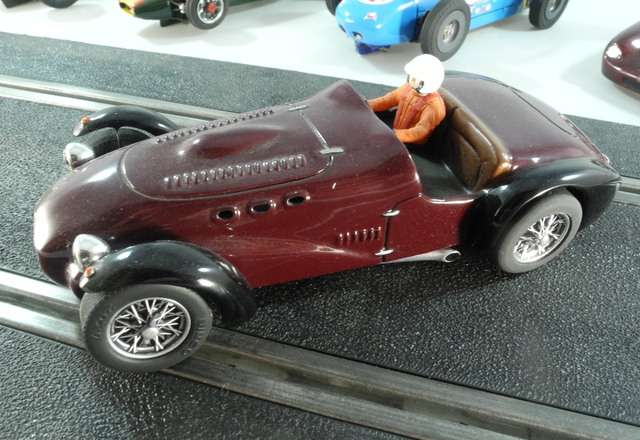
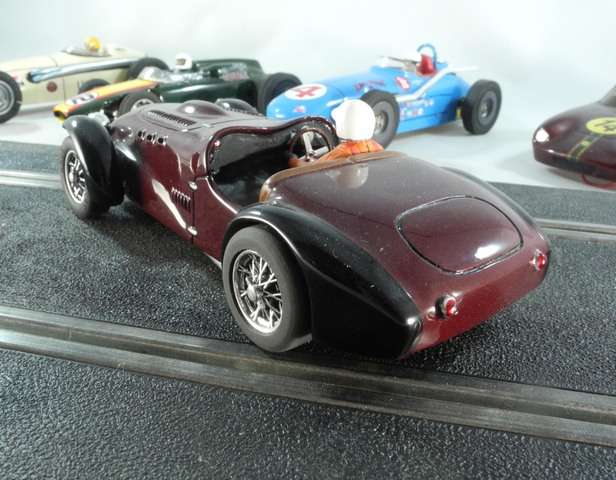
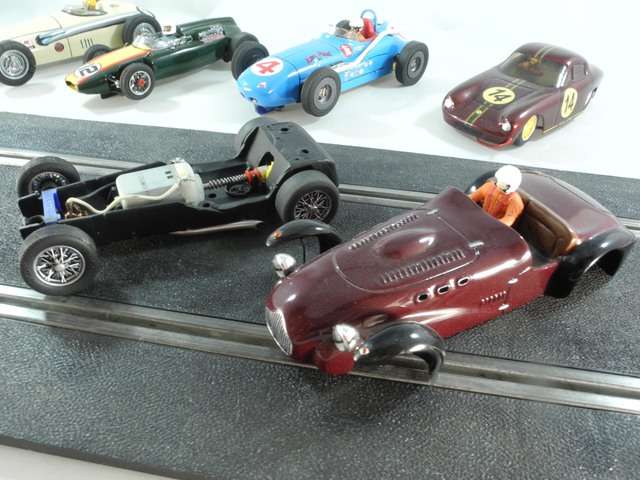
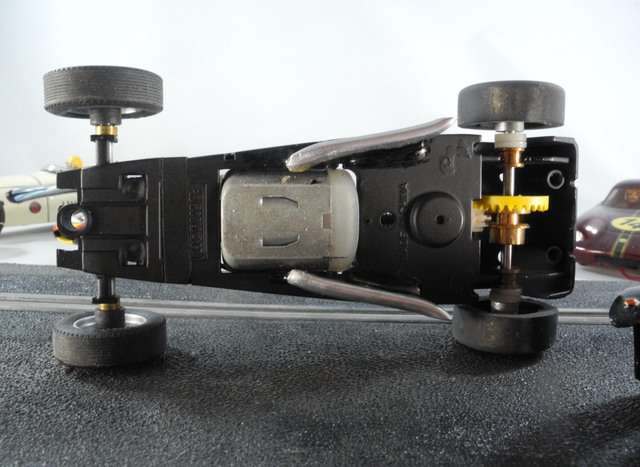
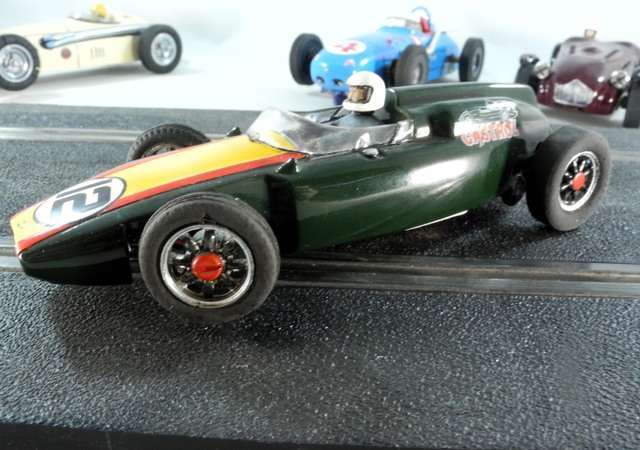
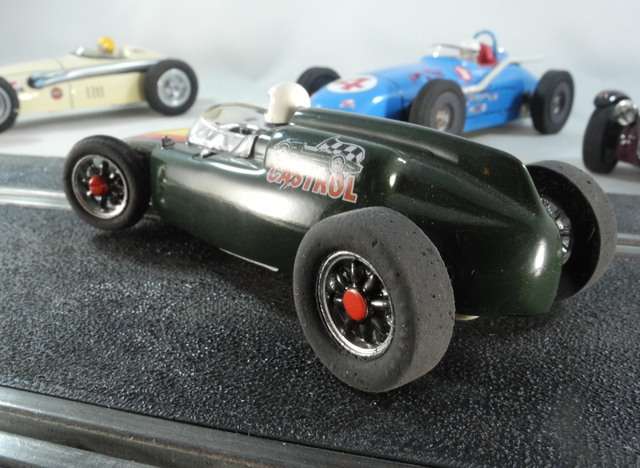
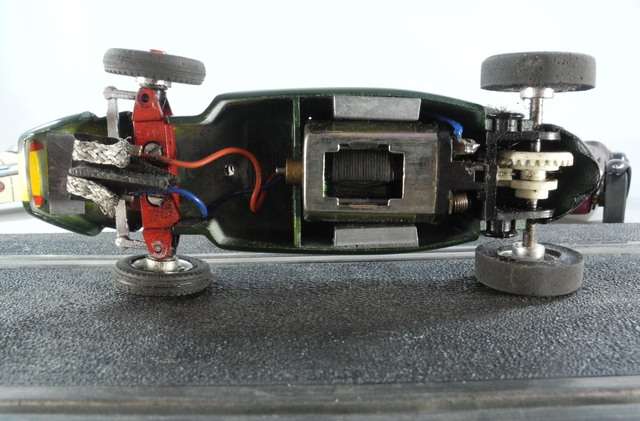
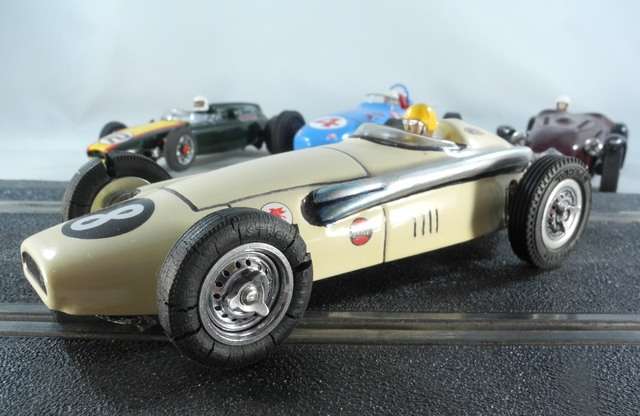
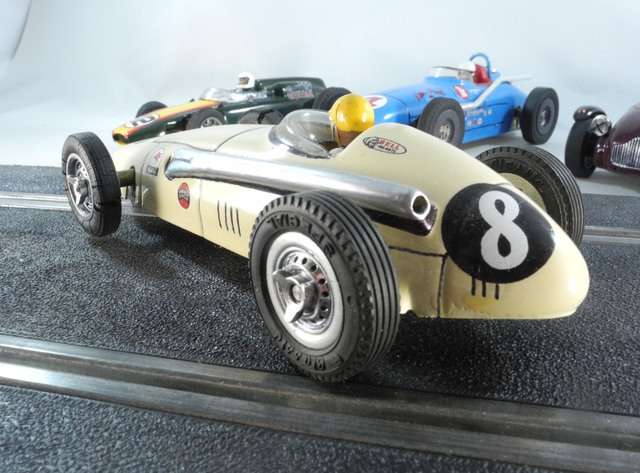
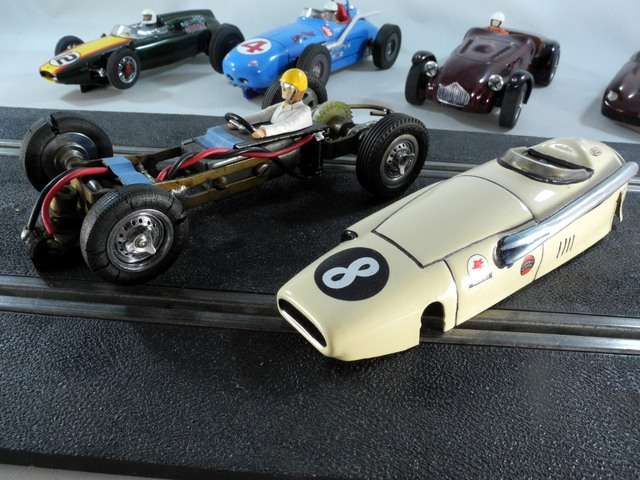
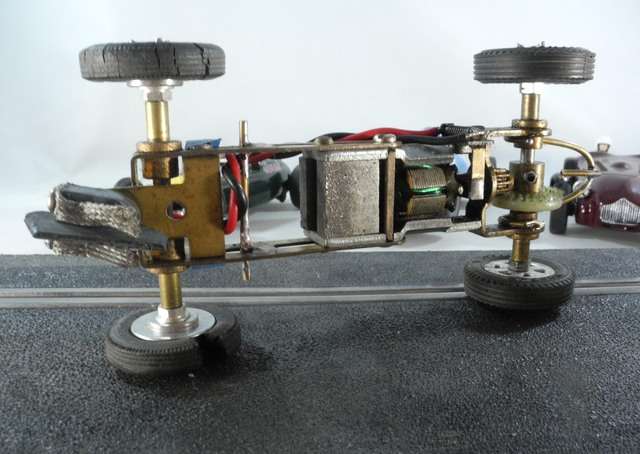
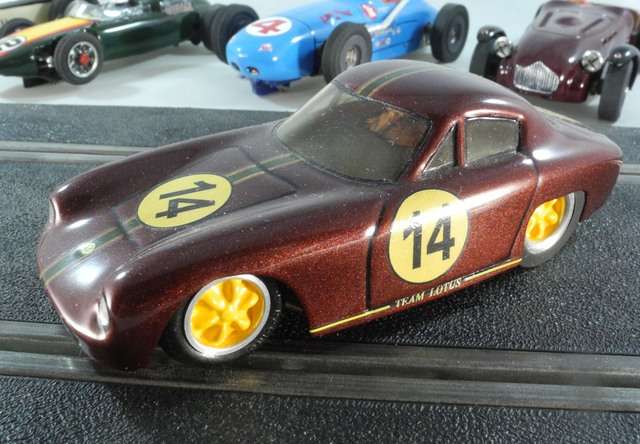

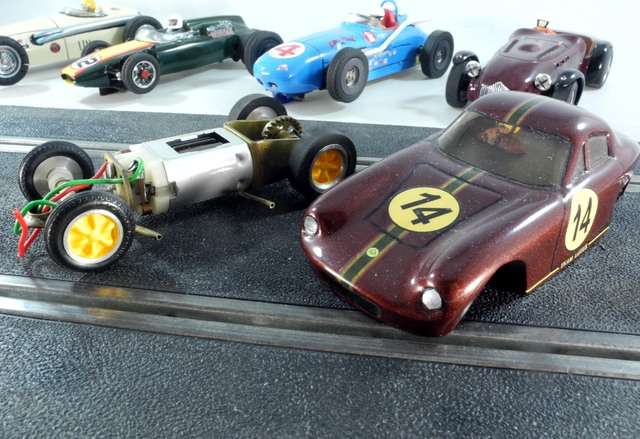
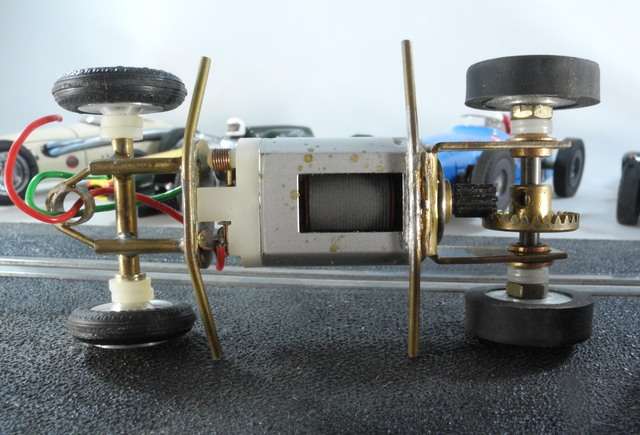
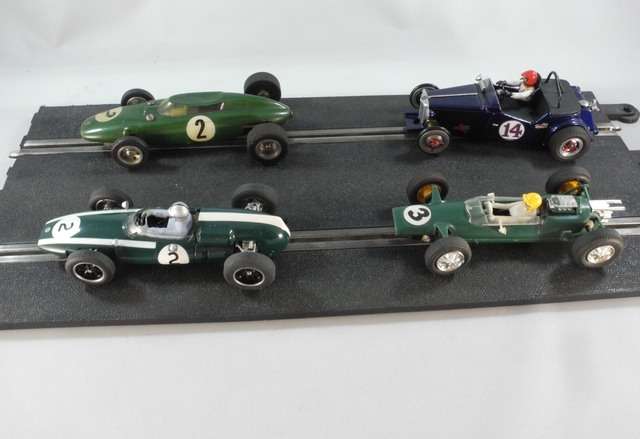
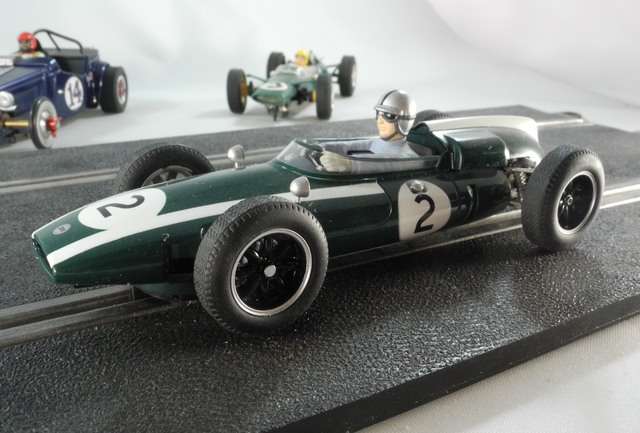
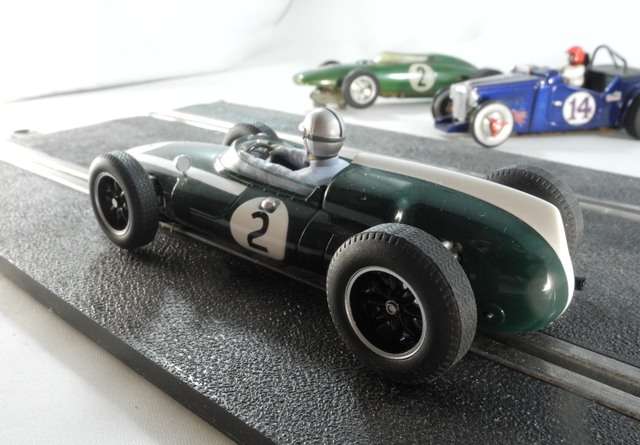
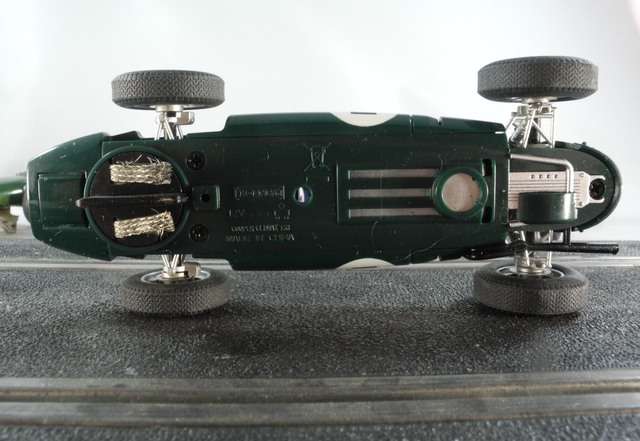
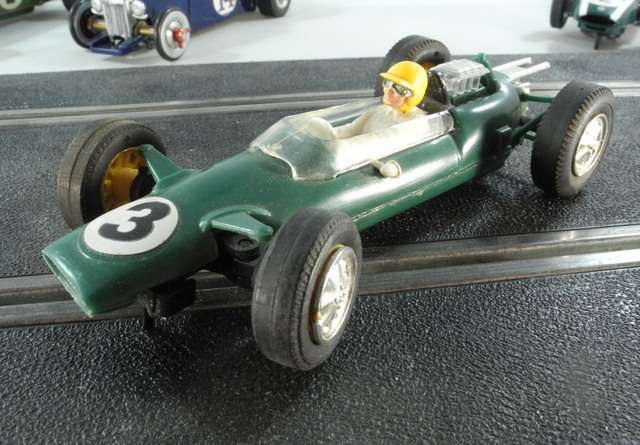
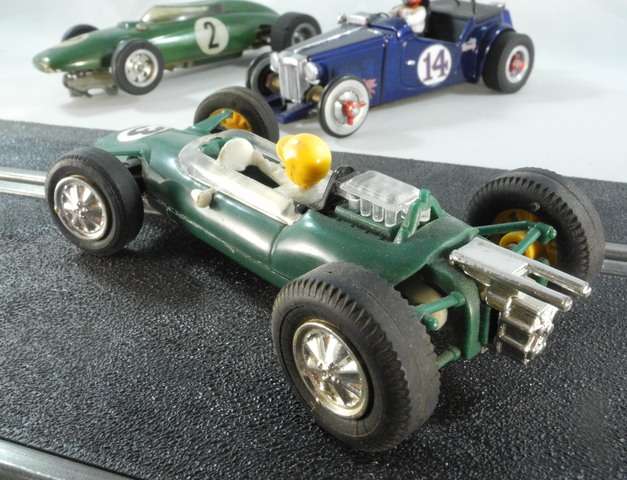
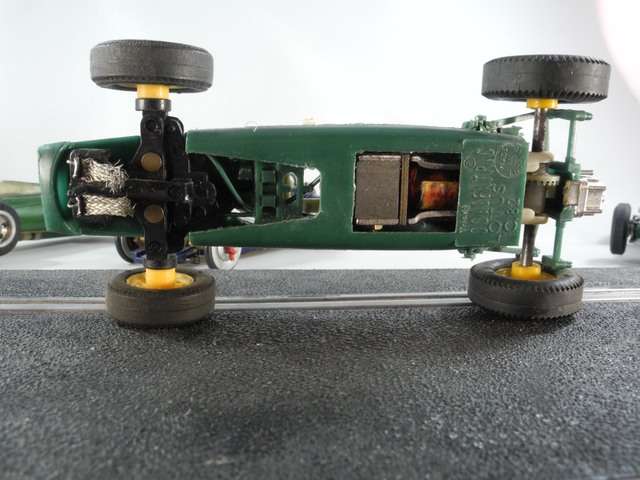
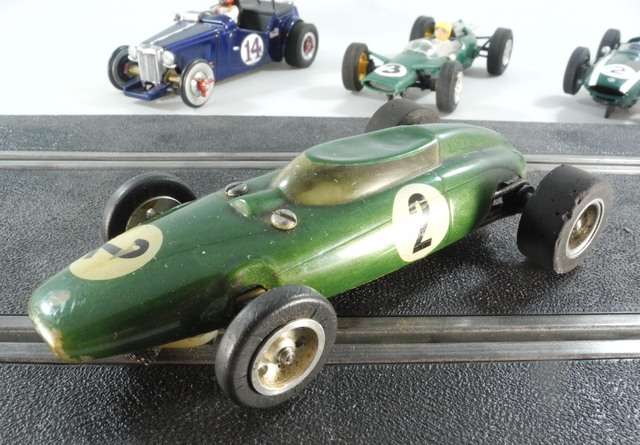
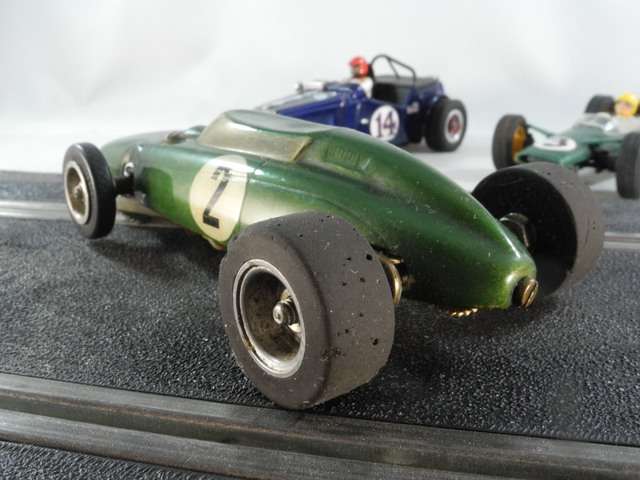

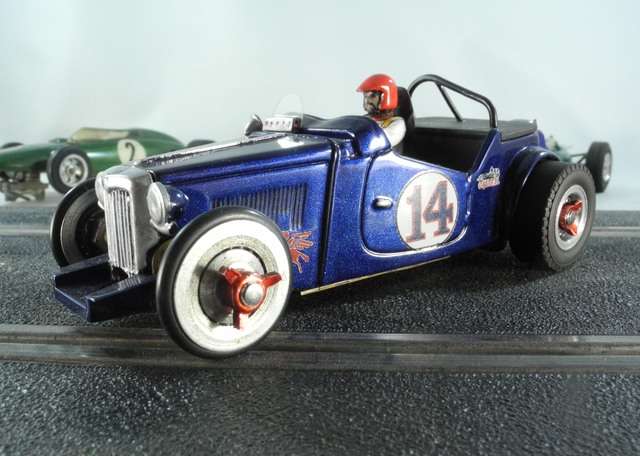
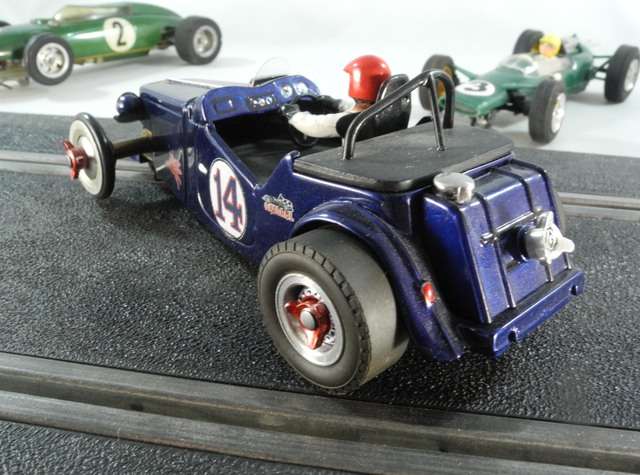
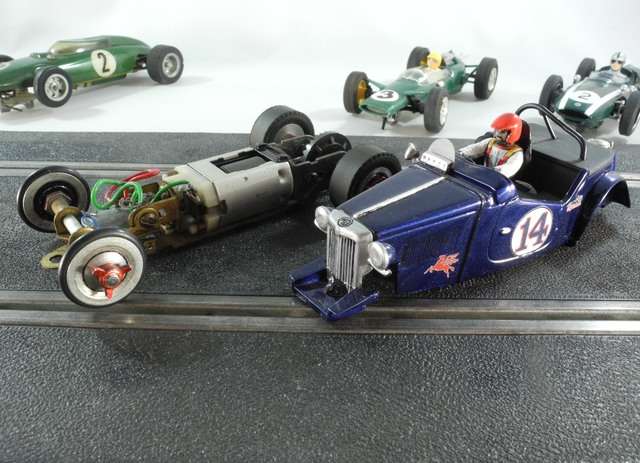
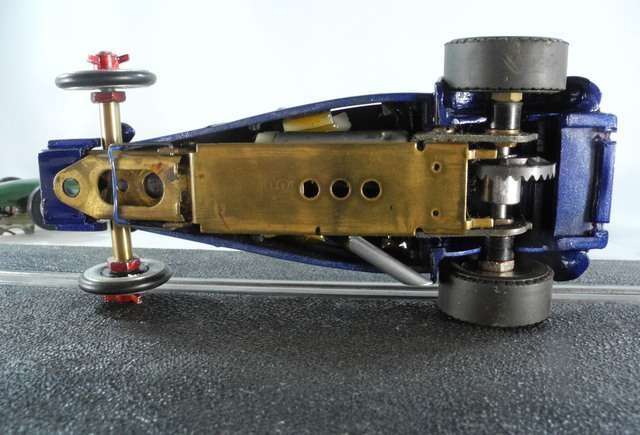


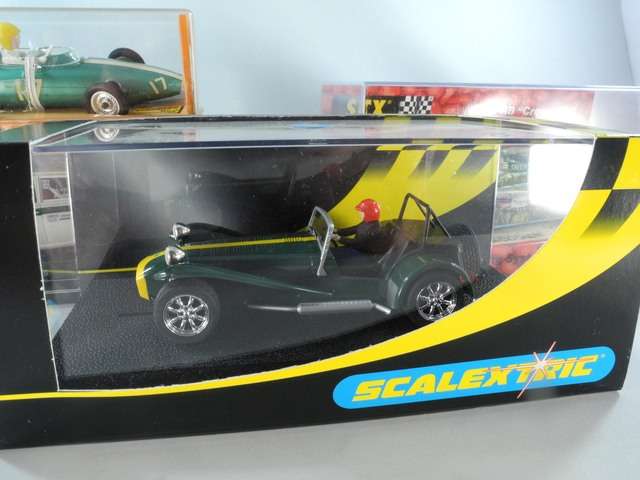
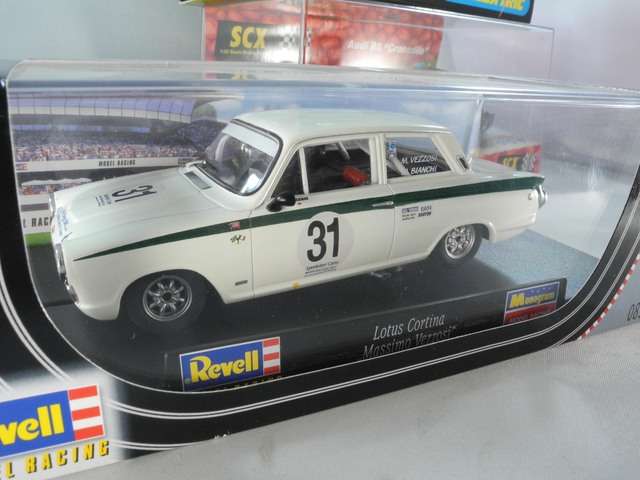

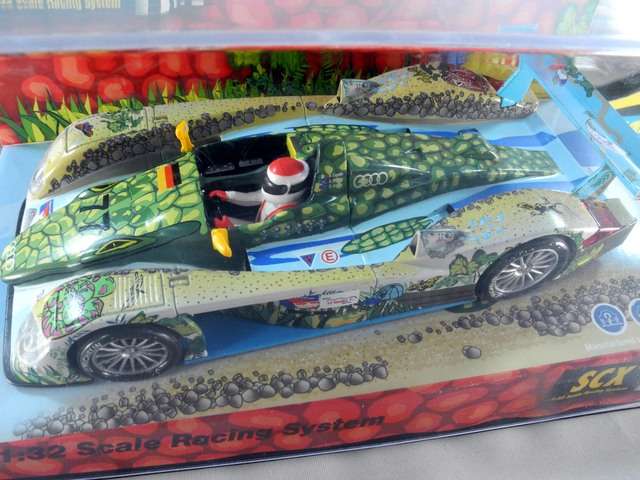
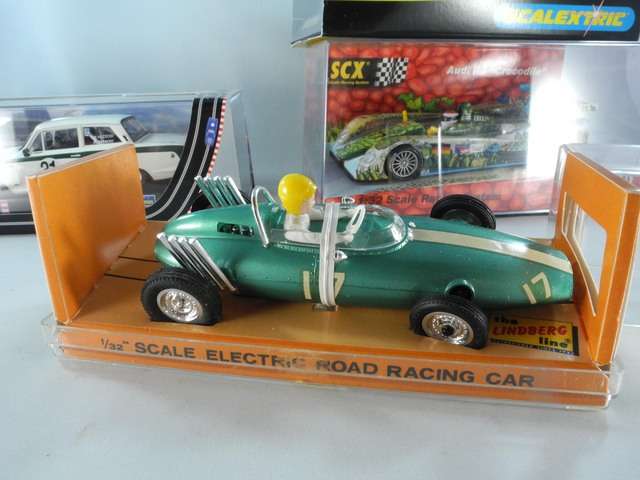
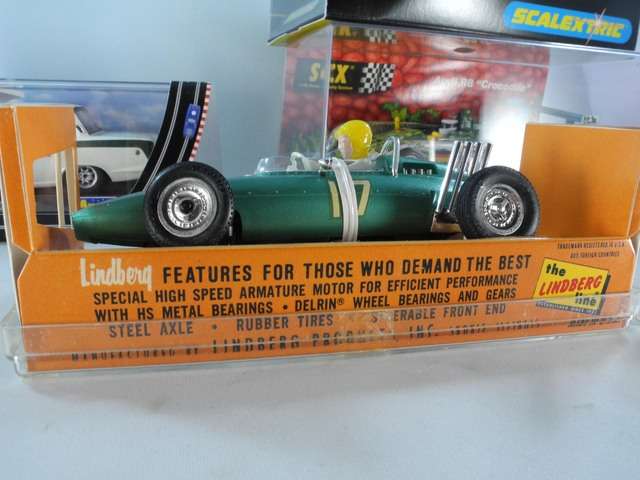
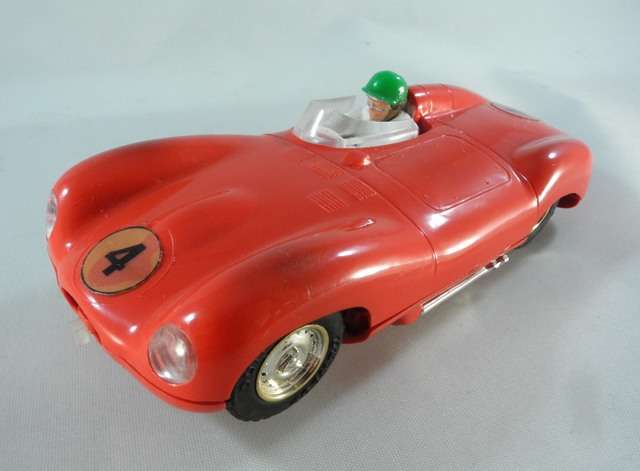
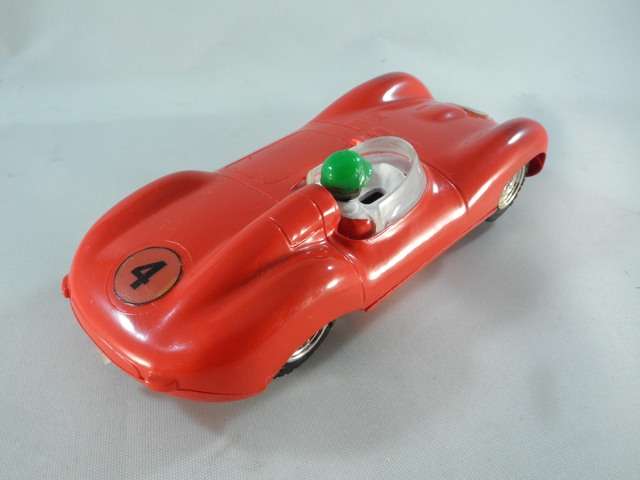
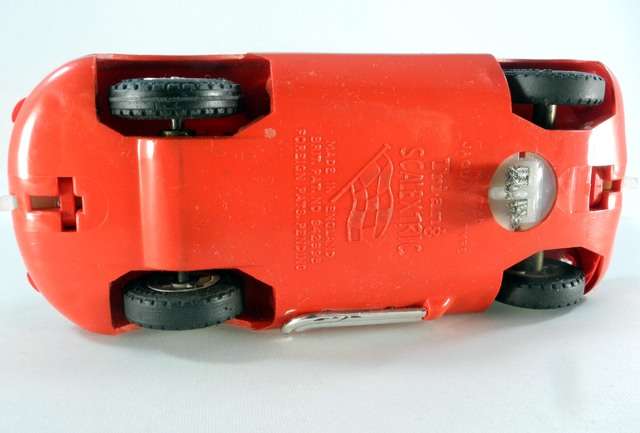
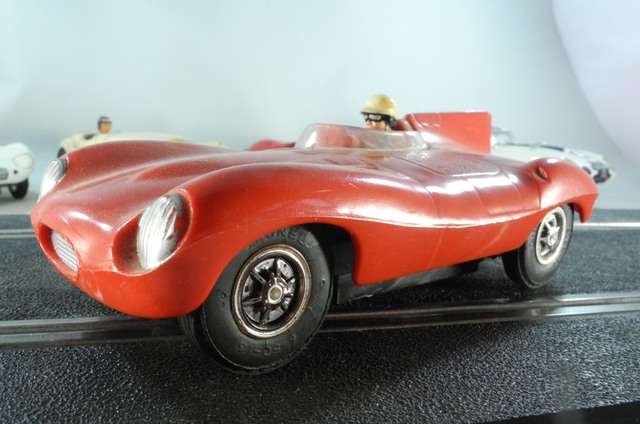
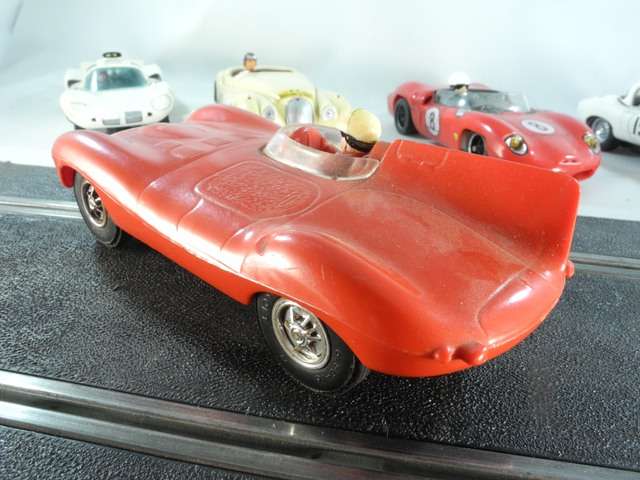

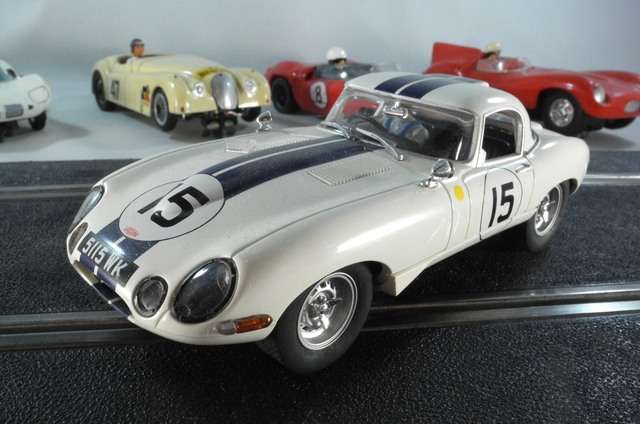

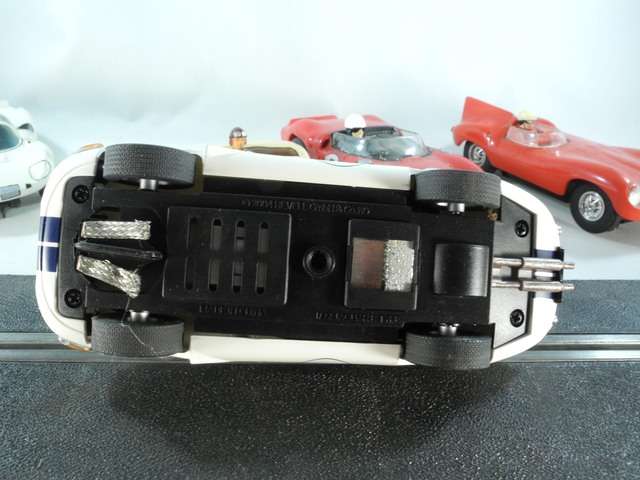
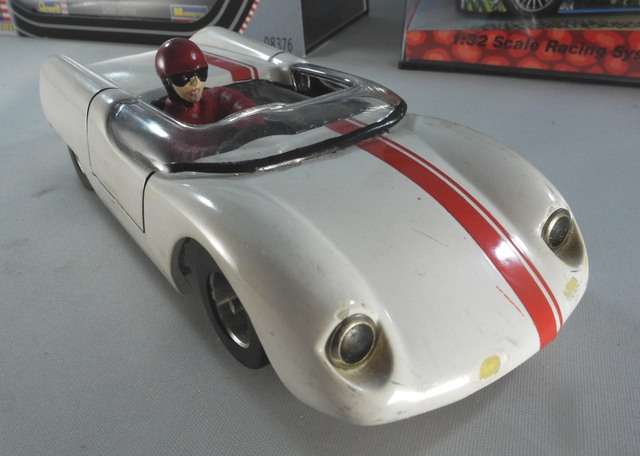
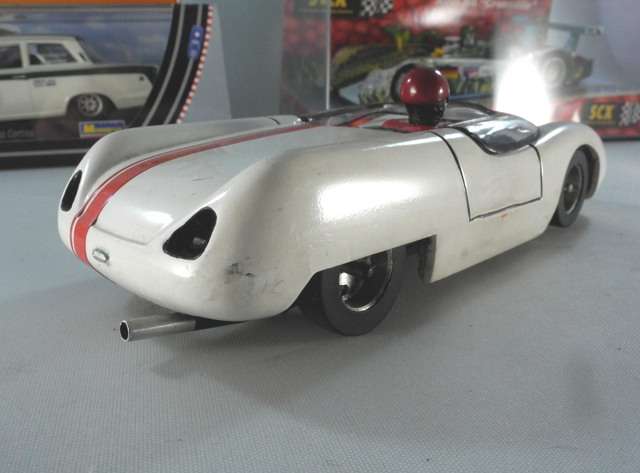
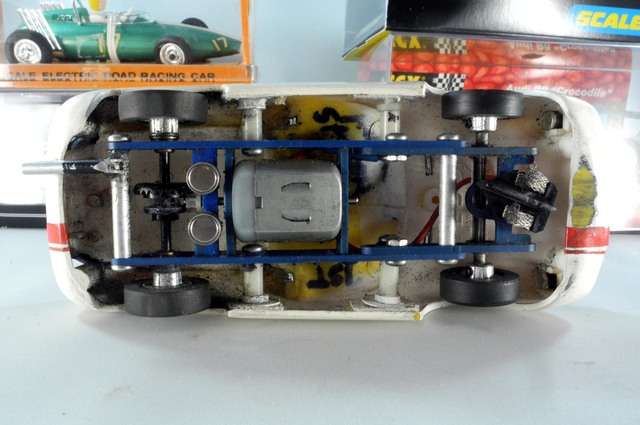
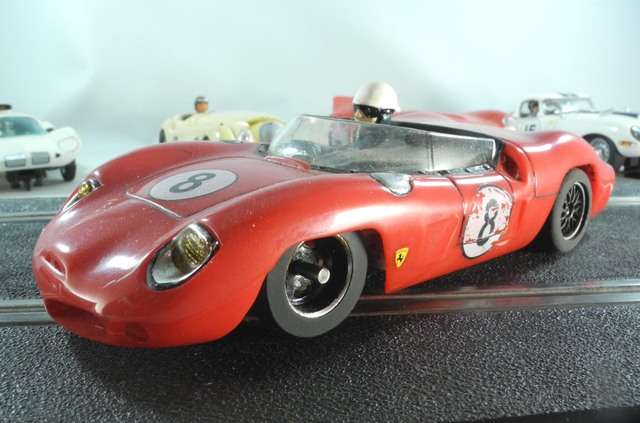
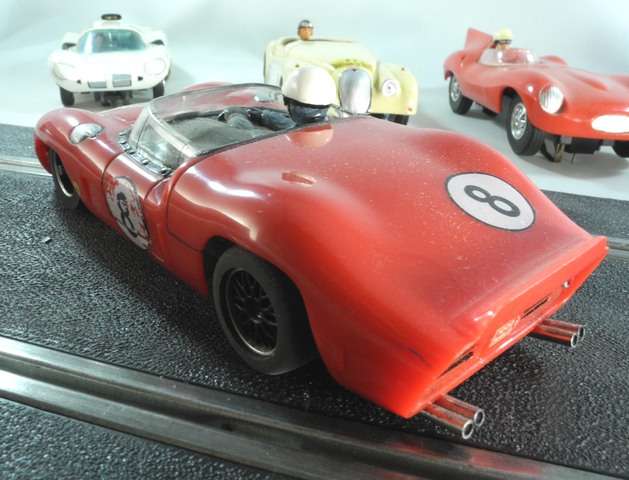
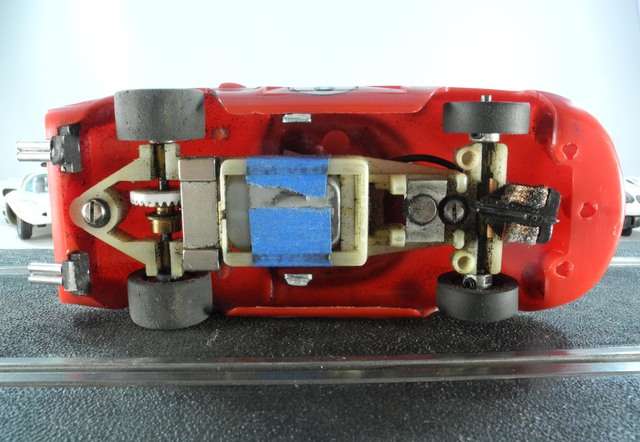
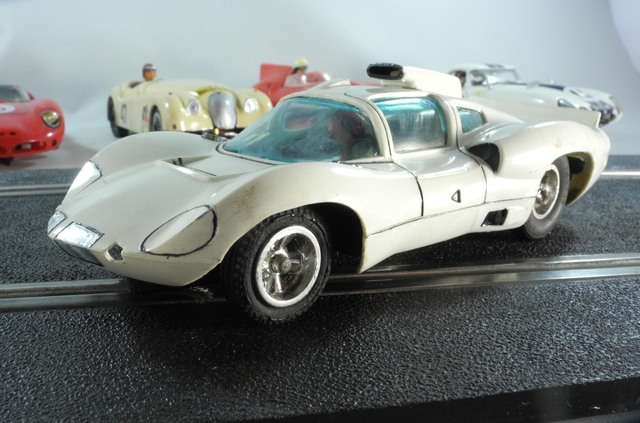
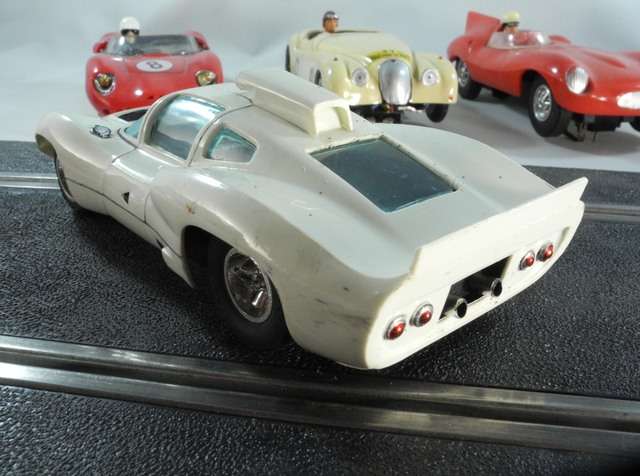
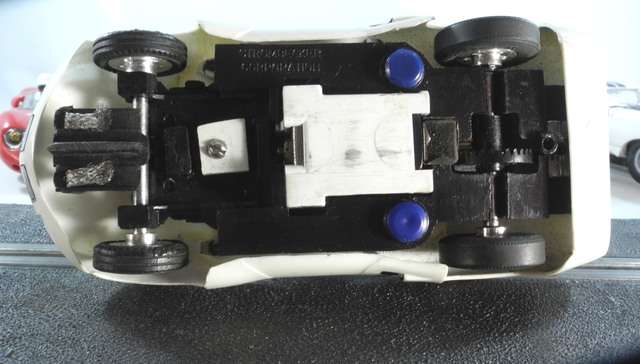
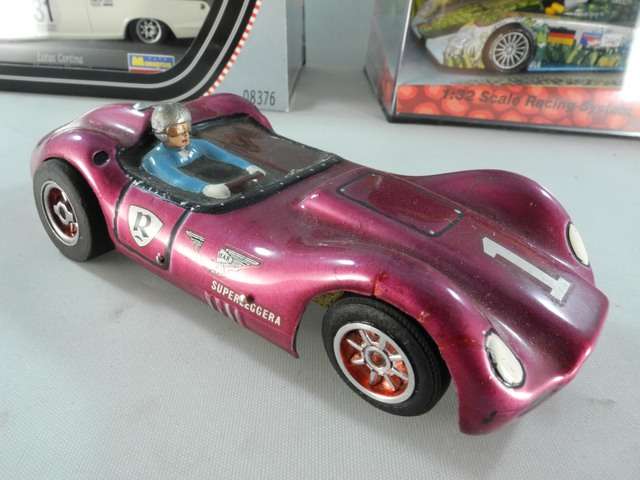
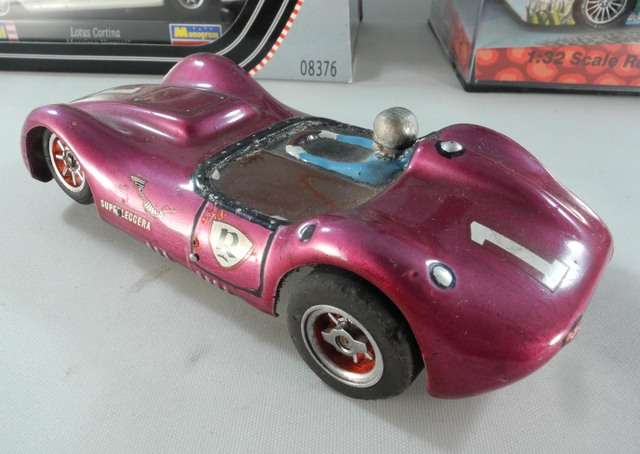
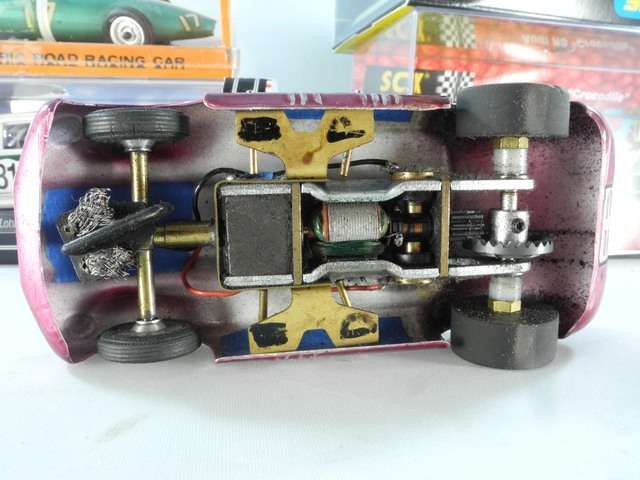

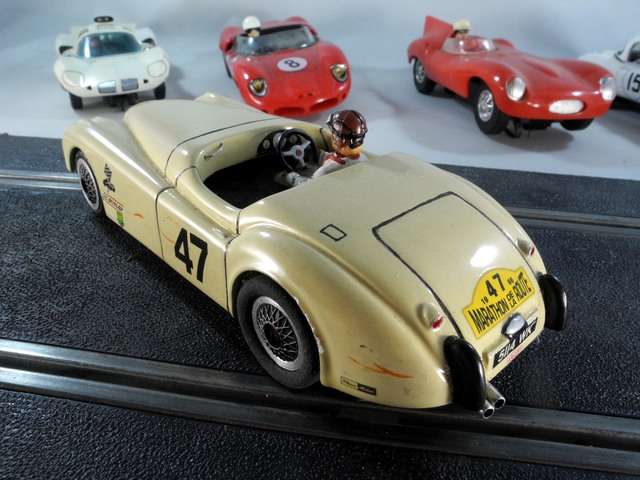
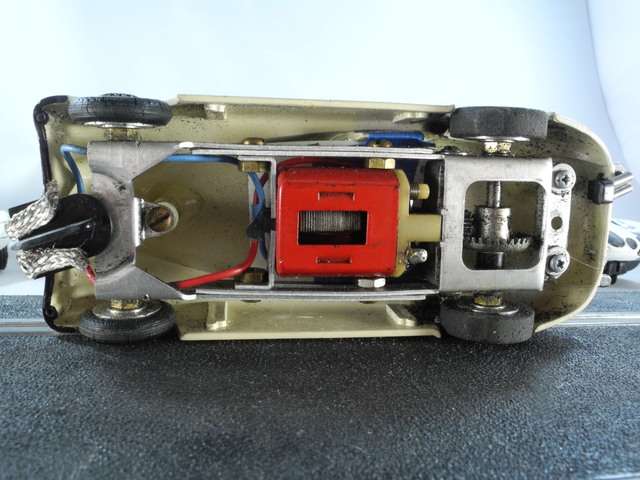
 It's an interweb thing.....
It's an interweb thing.....